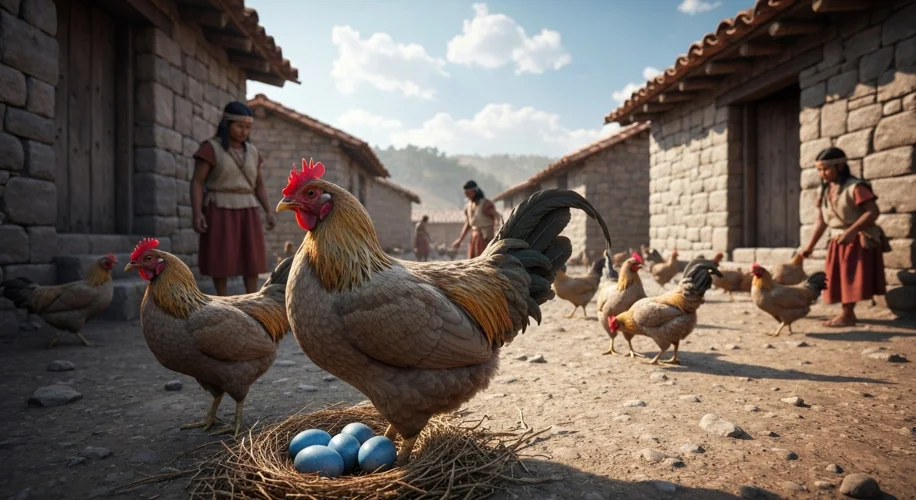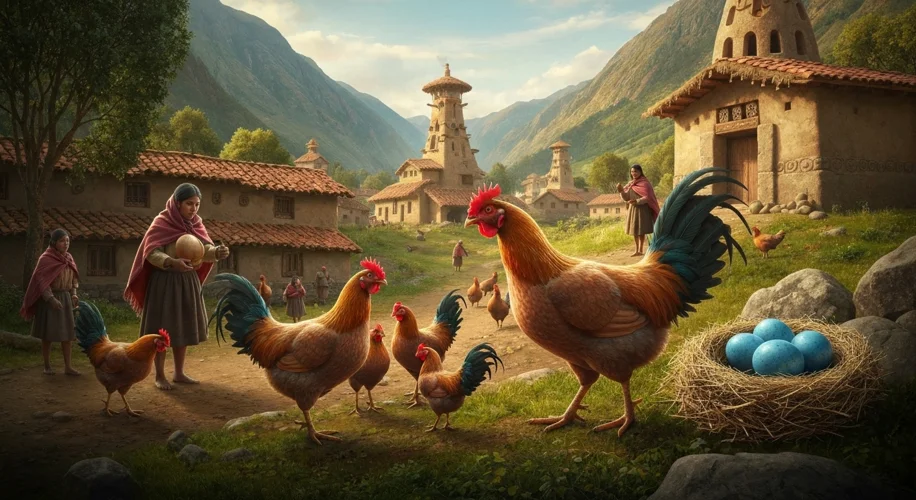Imagine a world before Columbus, a continent teeming with life and ancient cultures, largely isolated from the Old World. Now, picture a chicken, a common barnyard fowl, laying vibrant blue and green eggs. This isn’t a modern hybrid; this is the Araucana, and its very presence in South America before 1492 presents a captivating historical puzzle.
For centuries, the narrative of New World discovery has been dominated by European ships arriving on distant shores. Yet, whispers of pre-Columbian connections, particularly in agriculture, have persistently surfaced. Among the most intriguing of these is the question of the Araucana chicken. These remarkable birds, native to the Andes Mountains, are renowned for their lack of a tail and, most famously, for laying eggs in shades of blue and green. The puzzle lies in their origin: did they, like so many other domesticated animals, originate in Europe, Asia, or Africa, and then make their way across the vast Pacific or Atlantic oceans in antiquity? Or is there a simpler, yet equally profound, explanation?
The scientific and historical communities have long debated this very question. The traditional view, deeply entrenched in post-Columbian understanding, assumes that chickens, like most domesticated animals in the Americas, were introduced by Europeans. However, archaeological evidence and genetic studies have begun to paint a more complex picture.
One of the key pieces of evidence comes from archaeological sites in South America. Excavations have unearthed chicken bones and other avian remains that predate Columbus’s arrival. While the identification of these remains specifically as Gallus gallus (the domestic chicken) has sometimes been contentious, advancements in DNA analysis have provided stronger confirmations. For instance, studies have identified chicken DNA in pre-Columbian pottery and human remains in regions like Chile and Peru.
But how could chickens have reached the Americas so early? Several theories attempt to bridge this historical gap. One posits that ancient Polynesian voyagers, renowned for their seafaring skills, might have transported chickens across the Pacific Ocean. Polynesian cultures have a long history of cultivating chickens and are known to have reached Easter Island, a mere speck in the vast ocean, centuries before Europeans. Could they have ventured further east, to the coast of South America, leaving behind their feathered cargo?
Another, perhaps even more audacious, theory suggests trans-Atlantic contact. While often relegated to the fringes of historical discourse, proponents point to potential Norse voyages to North America as a possible vector, though evidence for direct contact with South America remains scarce. More intriguing are the possibilities of much earlier, undocumented trans-oceanic voyages.
However, a compelling counter-argument suggests that chickens might have originated independently in the Americas. While this is a less popular theory due to the overwhelming genetic evidence linking Old World chickens to their South American counterparts, the possibility of independent domestication or a yet-undiscovered ancestral species cannot be entirely dismissed. Yet, the genetic markers in Araucana chickens strongly suggest a common ancestor with Asian chickens.

The cultural context of the Araucana is also significant. Indigenous peoples of the Andes, particularly the Mapuche (also known as Araucanians, hence the chicken’s name), have a deep connection with these birds. They were valued not only for their meat and eggs but also for their unique egg colors, which held symbolic or ritualistic importance. The lack of a tail, a distinctive trait, also sets them apart.
The implications of confirmed pre-Columbian chickens are profound. They challenge the traditional timeline of global interaction and suggest a level of transcontinental connection far earlier and more extensive than commonly understood. It forces us to reconsider the isolation of the Americas and the sophisticated navigational capabilities of ancient peoples. If chickens were indeed present, what else might have traveled across the oceans?
Further research, particularly in archaeology and paleogenetics, continues to shed light on this feathered enigma. Each new discovery, whether of ancient chicken bones or genetic markers, adds a piece to this complex historical mosaic. The Araucana chicken, with its colorful eggs and debated past, serves as a potent reminder that history is not always a settled narrative, but an ongoing exploration, a quest to understand the ancient threads that connect our world.

